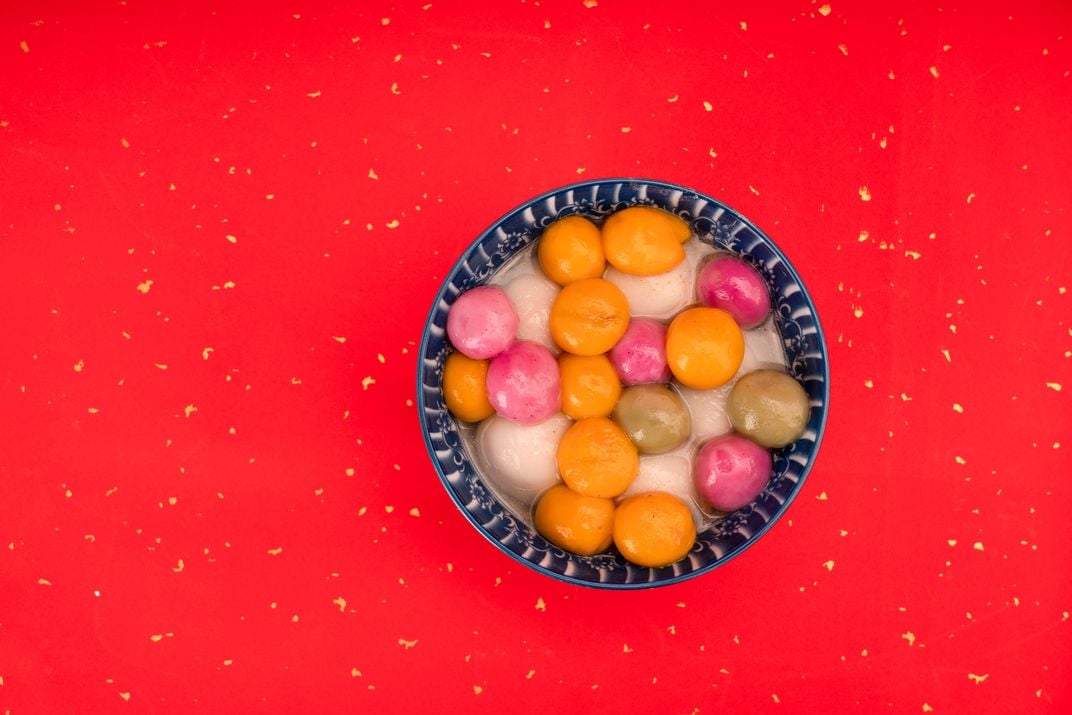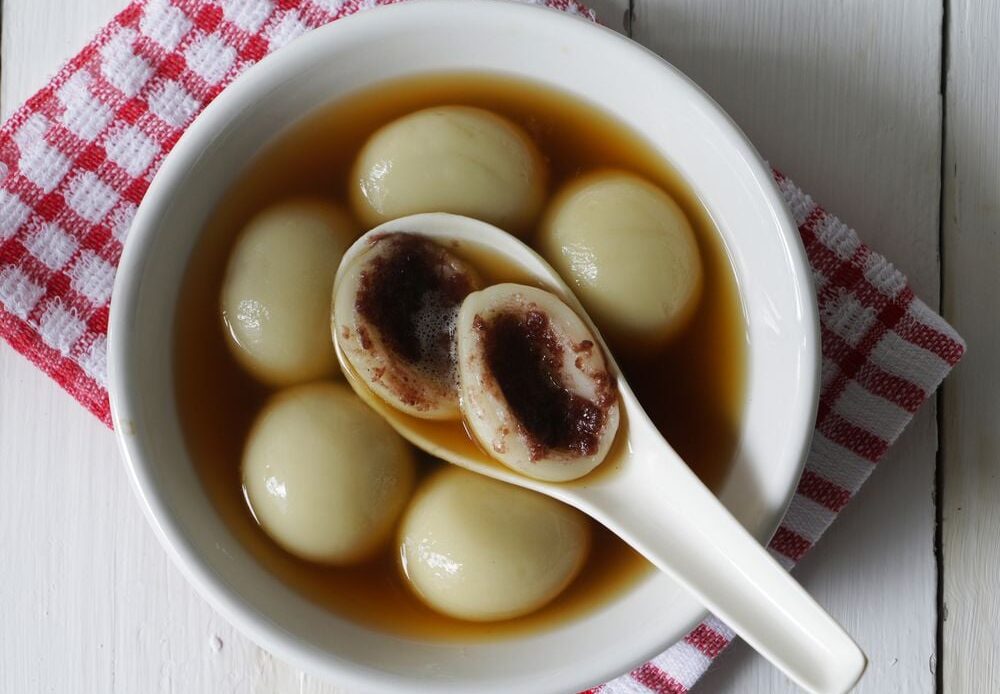Tang yuan fill the bowls of Asian households worldwide during Lunar New Year celebrations, the white, spherical desserts serving as edible representations of the moon shining overhead.
photograph by dorisj/Getty Images
It’s a brisk February day, and the kitchen is covered in rice flour. My Taiwanese grandmother is standing on the old fiberboard pineapple cake box she uses to reach her stovetop. As her boiling pot begins to steam, magic floats to the surface: tang yuan—soft, doughy rice balls bobbing and swaying in a sugary soup.
Every winter, I buzz with anticipation for the final day of the Lunar New Year, when tang yuan is traditionally eaten, awaiting the moment when the entire family joins in with sticky, dough-coated hands to roll the sweet dumplings.
To make tang yuan, glutinous flour is mixed with oil and water to form a supple, pliable dough. The dough is stretched into a snaking log, clipped into small pieces, rolled into spherical perfection, boiled in water and then plunged into a steaming, saccharine soup. Tang yuan may be served plain in a translucent stock. Or, the dumplings can be supplemented with a variety of fillings, from taro to peanut butter, and the soup served with sweet fermented rice and fragrant osmanthus flowers. Traditionally, the rice balls are filled with black sesame and simmered in a brown-sugar and ginger broth.
White tang yuan are the norm, but add some dye, and the rice balls take on even more meaning. yangyang/Getty Images
Fifteen days of Lunar New Year celebrations reach their climactic end with the Yuanxiao (Lantern) Festival, an observation of the burgeoning spring season and the first full moon of the new year. On this last day of festivity, tang yuan fill the bowls of Asian households worldwide, the white, spherical desserts serving as edible representations of the moon shining overhead. Translating to “soup ball,” tang yuan signifies togetherness and familial gathering, says Cheryl Lu-Lien Tan, author of A Tiger in the Kitchen: A Memoir of Food and Family. The Lunar New Year fixture is linked to the playfully similar-sounding Chinese phrase “tuan yuan” (“reunion”) and accompanying lucky saying “tuan tuan yuan yuan,” meaning reunion after separation. According to Tan, eating tang yuan is…
Click Here to Read the Full Original Article at Travel | smithsonianmag.com…
